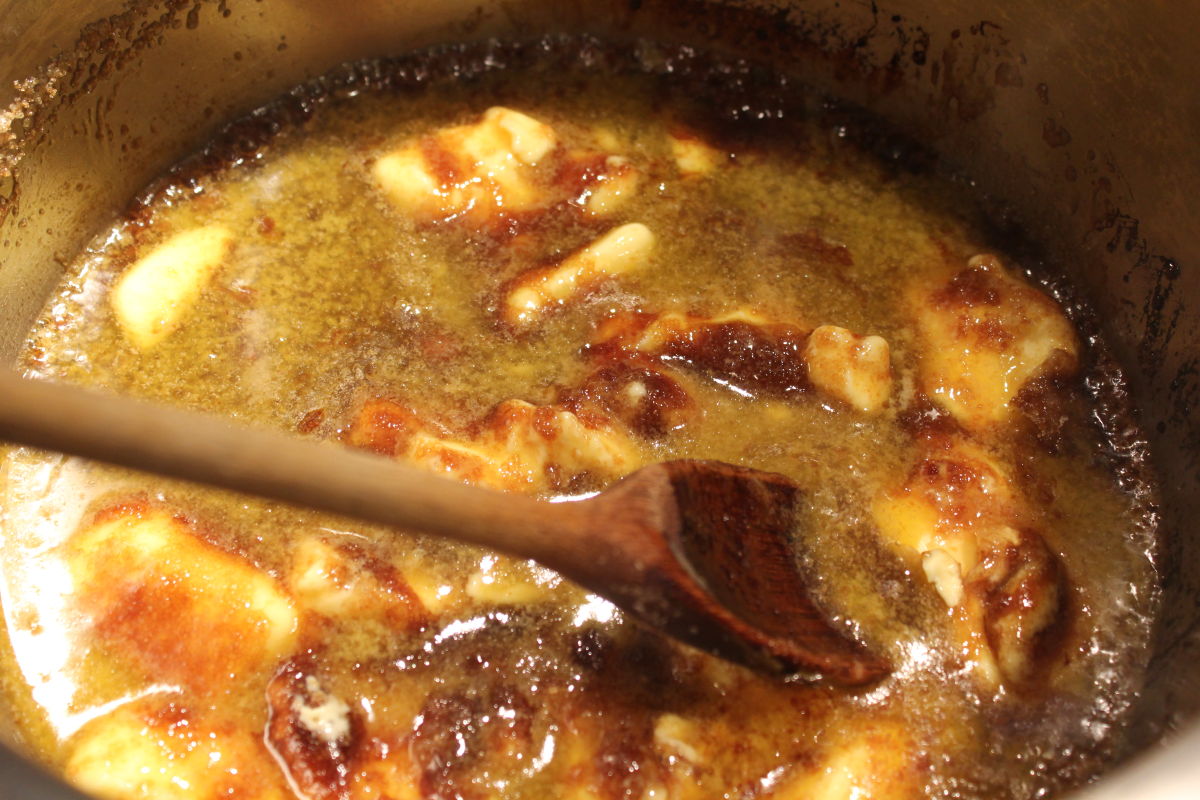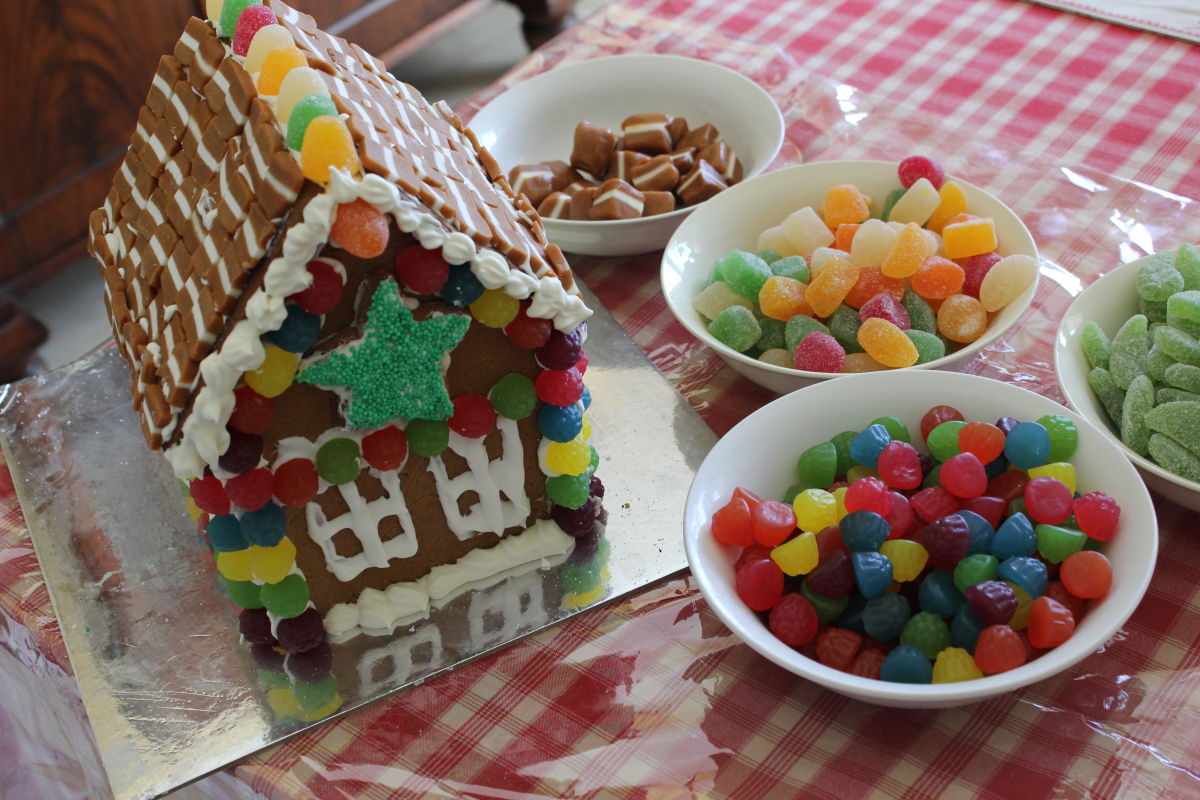

To begin making the gingerbread dough, I melted the butter and mixed it with sugar and golden syrup. Looks unattractive, smelt wonderful.


The dough coming together. The recipe is Mary Berry’s from a BBC TV site and includes the templates to make the house.
Ginger was first cultivated in China and was used as medicine. It arrived in Europe via the Silk Road, and the biscuits became so popular in England, it became the staple of Medieval Fairs, spreading to Holland, France and Germany.
Queen Elizabeth Ist had her gingerbread biscuits cut and decorated to represent certain characters in her court, a fashion which quickly became widespread.
Gingerbread Houses originated in Germany during the 16th century and became very popular when the Brothers Grimm wrote the story of Hansel and Gretel, where the main characters stumble upon a house deep in the forest, decorated entirely in sweets.


To make the house pieces, I divided the dough into five balls and began rolling, before placing the templates on the dough and cutting them out.


The house pieces ready to put in the oven.




Used the leftover dough to make biscuits. They were very popular with the family and visitors.


Made royal icing and began constructing the house, using jars to support pieces until the icing dried.


The decoration was a joint effort and took two days, leaving the icing to dry before doing the next stage. Aesthetics took second place to fun in this project.




The house is wrapped in cellophane and is on display. We’ll declare it open for eating on Christmas Eve.
As we head towards Christmas Day, commemorating the birth of Jesus, many of us in Australia observe festive traditions, such as singing carols and lighting candles, visiting family and friends, decorating our houses, cooking special food, wrapping and exchanging gifts and attending church services.
Wishing you a MERRY CHRISTMAS and a HAPPY NEW YEAR!
